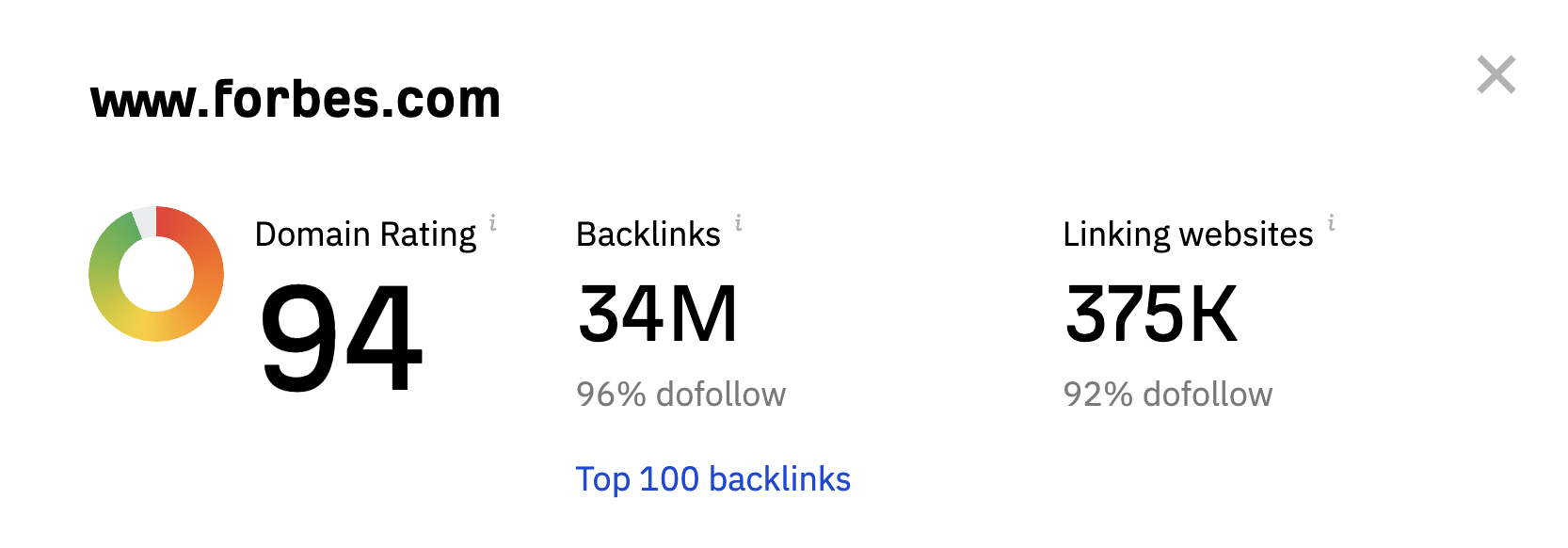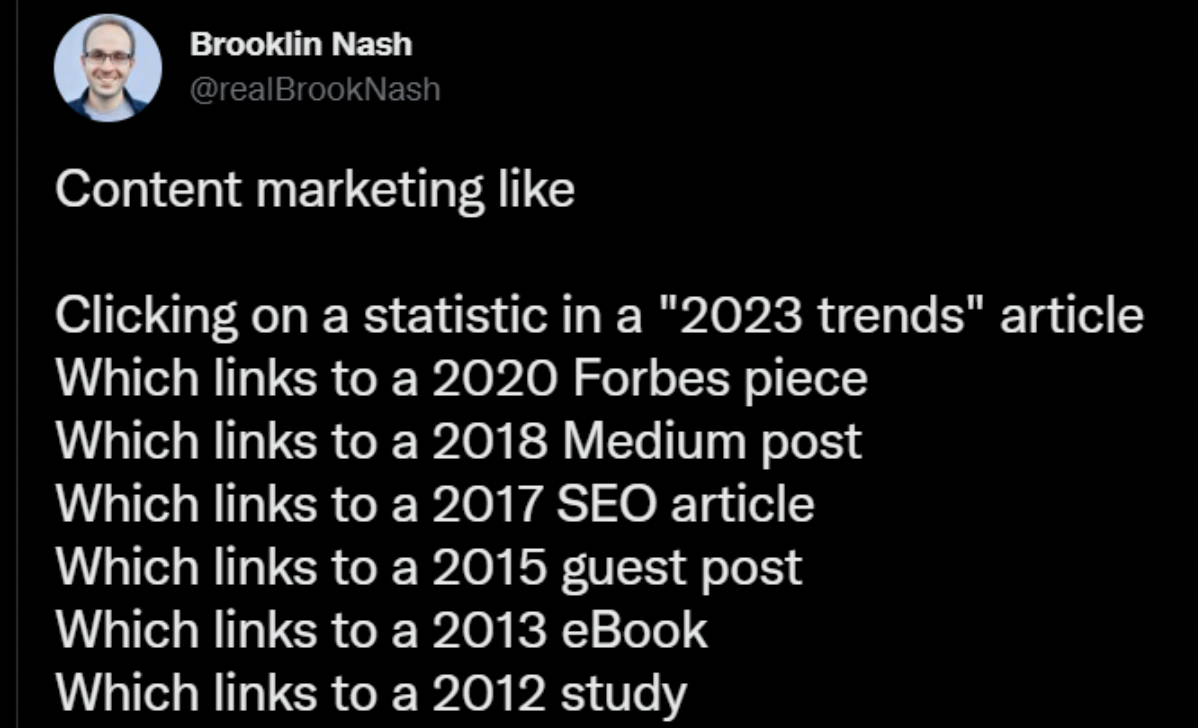Are you still sharing each blog as a LinkedIn post, hoping people will click on the link? To be honest, this strategy only works with people who enjoy a huge following. But if you don’t have that, it’s a hard pass.
You must make sure you have high website authority if you want to attract constant traffic. Google gives a website with high authority priority by pushing your content farther up the SERPs, giving you a ranking advantage over less authoritative competitors.
But if you want to increase your website’s authority, you need time, planning, and top-notch content.
This blog will cover the top strategies you can apply right away to increase your website’s authority organically.
First things first, let’s understand website authority.
What Is ‘Website Authority’?
Website Authority is a score that measures how likely a website is to rank in the SERPs—also known as Domain Authority (DA) or Domain Rating (DR). As the name suggests, it refers to a domain’s ‘authority’ or strength and is calculated against 100.
For instance, a website with DA 85 is likely to rank higher than one whose DA is 65. Remember two points here:
- Google doesn’t use DA as a ranking factor.
- You should always use DA compared to another site of the same scale.
Why?
Because the score is not absolute, it reflects how often Google uses your website in the SERPs compared with other websites. Online website authority calculators consider many factors while calculating the website authority — backlinks are among the most important.
Why is Website Authority Important for you?
Website authority reflects your website’s credibility, which makes it very important. Google knows that nobody would read content from a website with low credibility. Because of this, it only ranks websites with reliable content.
Website authority —a score —allows you to understand how search engines perceive your website and help you compare your site with your competitors.
It also comes into play when you’re looking to earn backlinks from other sites. Check their website authority and choose the ones with the highest authority, as backlinks from those sites would positively contribute to your rankings.
A Step-By-Step Guide To Improve Website Authority Organically
Now that you know the importance of website authority, it’s time we get into the crux.
The key path to growing your website authority is through backlinks.
Ahrefs’ study found that the number of backlinks directly correlates with organic traffic. But the quality of these backlinks also plays an important role. You can’t collect backlinks from any random sites just for the sake of quantity.
Make sure the website that you’re getting a backlink from has:
- A good website authority itself, and
- It doesn’t link back to other low-quality or shady websites —those can really get into trouble with the algorithm
Follow The Steps Below To Use Backlinks To Improve Your Website Authority:
1. Begin By Checking Your Website’s Authority
You can’t fix your score without knowing it. Use online tools to measure your website authority as compared to your competitors. Different tools have different calculation criteria. Below are some common factors they take into account:
- Number of backlinks
- Website authority of those backlinks
- Unique domains that those sites link to
You can use these tools to check your website authority:
What’s a good score?
So, you’ve got your website authority, but how do you know if it’s good or bad? Let’s assume you compare your DA with Facebook today, and it comes out to be 30. But if you try again in a few months, when Facebook has acquired more backlinks, your score will be lower.
That’s because website authority is not an absolute metric but a relative one. You can’t conclude that 30 is a bad metric or that 70 is a good one. You can only compare your website authority with other sites.
For instance, if your competitor’s score is 92 and yours is 85, you need to work on your authority. But if your competitor’s score is 72 —less than yours— you’re good to go.
Moreover, Facebook is a high-authority site that takes up the higher slot in the Domain Authority scale. Check out its website authority below — we’ve used Moz here.

You may easily raise your website authority from 20 to 30, but it’ll be extremely hard to raise it from 75 to 90 as very authoritative sites take up this slot — the competition is fierce.
2. Post Valuable Content
We’ve said this enough, and we’ll say it again- Content Is King! Cold pitching and networking help you gain some backlinks. But answering your audience’s questions with valuable content gets your continuous traffic and backlinks.
The best example here would be Forbes. Forbes publishes highly valuable content that gets it traffic and backlinks. Check out its website authority below:

If you have to back your point in a blog, who would you link back to? A site that you trust. Trust builds on content that solves problems and answers questions.
Create valuable content, so your target audience or industry websites naturally link back to it. Use quora to find burning questions in your industry and answer them via blogs. Then, link that blog under the questions on Quora.
Doing this consistently will also build your image as a thought leader, and more people will want to link back to you, as it will also increase the credibility of their content. Remember, backlink strategy is a game of give and take. When you provide value — combined with money in some cases – you can earn great backlinks from authoritative sites.
Moreover, a complex domain extension doesn’t help. A short and memorable domain name with a simple extension such as .icu is a smart step to replace long, awkward domain names making your URL easier to remember and readable for crawlers and people.
These content types are backlink magnets:
- Statistics Reports
Have you ever heard of the skyscraper technique? It’s a backlink strategy where you find a page with several backlinks, create something similar —yet better —then pitch the backlinking websites to link to your content instead.
This technique works wonders with statistics, and the reasons are pretty obvious:
- Stats get old, and everybody wants the latest news
- Sites rarely update stats regularly
The root cause of this loophole is that stats are hard to get by. It happens very often that a website publishes a statistics report in 2022 that contains stats from 2012. Brooklin Nash, a prolific writer, content marketer, and founder of Beam Content, agrees with us on this one.

You can use this opportunity to create a fresher statistics report around the same topic and pitch websites to link back to your content.
- Thought Leadership Content
Thought leadership content —blogs in this case — comes from your CEO or Founder where they share their views on a particular topic. It includes topics that:
- Talk about the future of a product or industry
- Share founder or CEO’s opinion on changing norms
- Share advice to succeed in the industry or life in general with personal experiences as examples
Thought leadership content builds your brand’s credibility in the market. The aim is to establish authority and be the go-to resource for your target audience. Customers associate trust with the faces behind the product and choose you over your competitors.
CEO and founders —even content marketers —who actively share thought leadership content on their website and social media are more recognized in the market, bringing reputation to their products as well.
- Free Tools Page
At the start of this article, we linked free tools for you to check your website authority. Some of you may have already done it —which is great. The point is that bloggers want to help readers, and free tools are the best way to do it.
HubSpot, Ahrefs, Moz, and other marketing websites have been doing it for ages. You can do this too.
Create a free tool that genuinely helps your target audience. Here are a few examples:
- If you have a restaurant, create a tool to suggest the wine to go with a dish
- If you have a productivity SaaS tool, create a Pomodoro tool to help your audience do focus work
- Ask for it —properly!
If you’re solely relying on the skyscraper technique, you will find prospects who’re linking to the old page and paste the same pitch to all of them —fingers crossed. But it’s like shooting an arrow in the dark.
Do this instead:
- Go to SERP and find the web page with the most backlinks.
- Narrow down prospects. Remove all no-follow, UGC, and sponsored links. Also, remove websites with low traffic. You don’t want to waste your time pitching sites that cannot contribute to your website authority.
- Once you’ve got a clean, relevant list of prospects, find their emails with tools like Snov or Hunter. Then, create an email template and personalize it for each prospect.
Now, pitch —use email, social media, and communities. And don’t forget to follow up.
3. Use Internal Linking
For crawlers to list your pages in their massive indices, internal links are necessary. A link structure helps crawlers browse your website and find all your web pages.
Once a crawler reaches your homepage, it uses multiple links to get other pages on the website. They wouldn’t be able to see other pages if you’ve not internally linked to them. High-volume keywords or smart marketing won’t help if you’re short of internal links.
Tips for using internal linking effectively.
- Use the right anchor text: The phrase ‘SEO tactics’ would be great to link to a blog about SEO tactics. On the other hand, if you add a link to random phrases or words that have nothing to do with the link, it can reduce the impact of internal linking.
- Link the significant pages from the homepage: Googlebot divides link value among various web pages. Your homepage has the highest link value since most internal and external links link back to it. So, if you want to attract traction to a significant page —say, your latest blog post — to gain traction, link them from the homepage.
- Use contextual linking: Pick an in-depth article to start the internal linking process; this will be your cornerstone article – the one you’ll connect to other blogs. Your cornerstone article should talk about any topic in detail. So you can link it with other blogs. like, ‘How to build backlinks.’
4. Collaborate With Other Brands
Brands —big or small —can benefit from healthy collaborations with companies, influencers, and publications. Strategic partnerships help you earn backlinks from industry leaders that wouldn’t have linked back on their own.
The market is filled with examples of strategic partnerships that built a name for the brand. Take GoPro collaborates with influencers from Instagram, YouTube, and Tiktok to share snippets of their adventures. The strategic partnership earns GoPro links and shares across social media.
You can find collaboration opportunities or partners in:
- Events
- Webinars
- Podcasts
- Communities
- Guest Posts
Use An Attractive Domain For Your High Authority Website
A high authority website should look attractive too. Ditch complex domain extensions and register a short and memorable domain name with .icu. Visit www.now.icu!
Author Bio

Pooja Uniyal is a SaaS and Marketing content writer and strategist specializing in long-form content.
